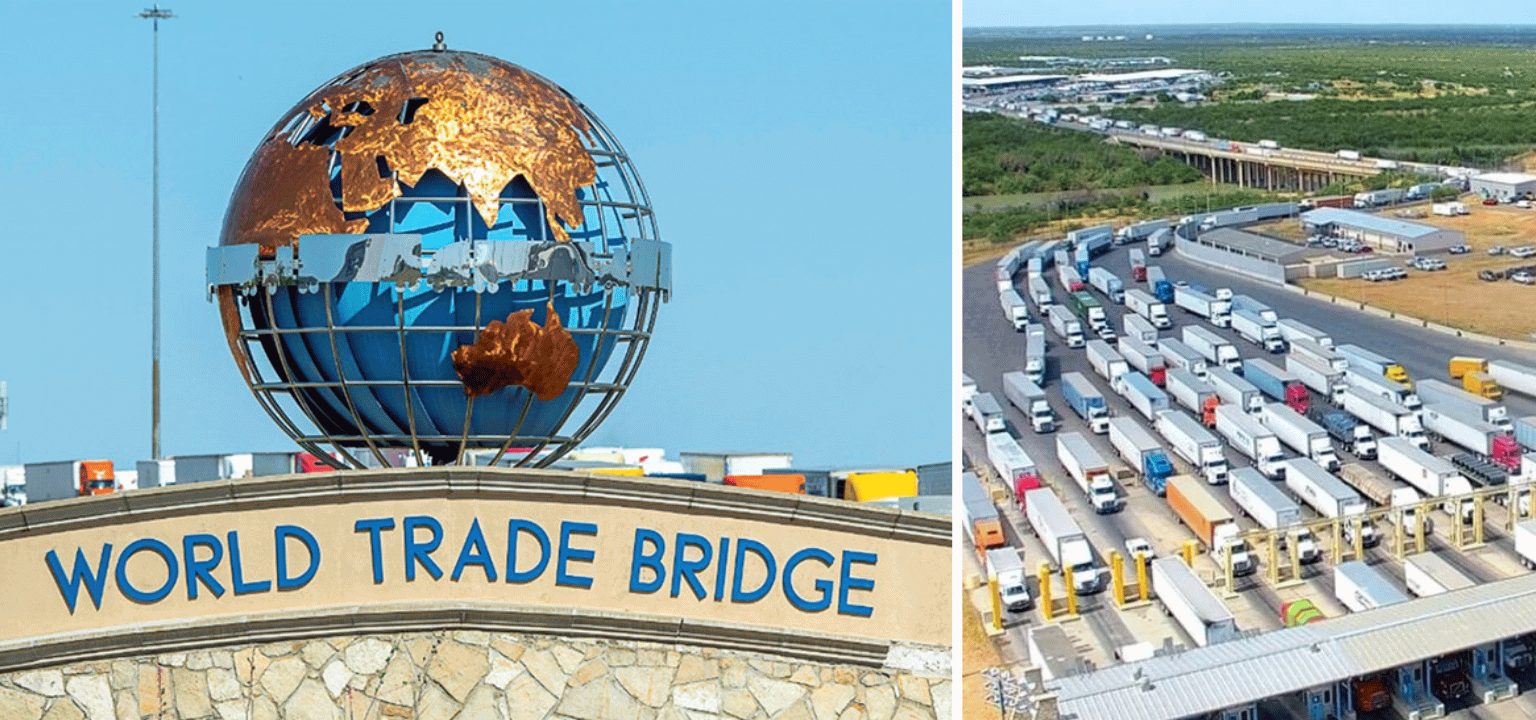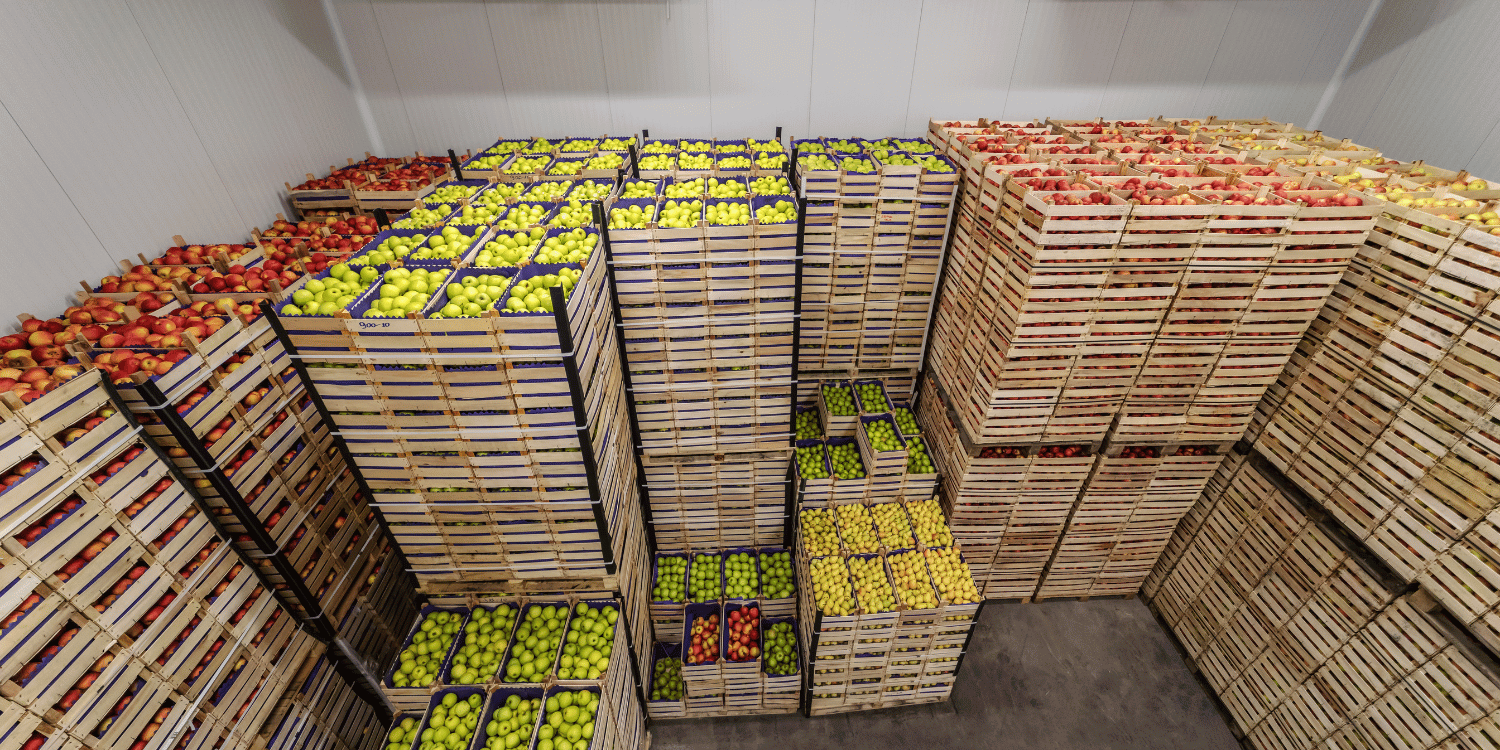Managing resources efficiently while reducing negative environmental impact has become a crucial concern for businesses worldwide.
In the context of supply chain management, particularly in the produce sector, sustainability is no longer an afterthought but a crucial business strategy.
End-to-end logistics, from farms to supermarket shelves, are increasingly being redefined by sustainable practices.
This transformation is driven not only by environmental responsibility but also by stringent regulations and changing consumer demands.
The challenge now lies in implementing these practices without compromising essential factors such as cost, quality, and delivery time.
Through this exploration, we aim to discuss several innovative practices that are shaping the future of produce logistics in a sustainable manner.
- Adopting renewable energy for efficient transport and storage.
- Implementing effective routing and delivery schedules.
- Emphasizing on reusable materials to reduce packaging waste.
- Prioritizing organic farming methods and local sourcing.
- Optimizing procedures and software for energy-efficient warehousing.
In the following sections, we will broaden our discussion beyond sustainable practices in produce logistics.
You will find information on related key areas such as the role of sustainable procurement in this sector, the benefits of effective waste management to reduce environmental footprint, and various innovative technologies that are reshaping the industry.
Each of these topics, though interconnected, offers a distinct perspective on the broader theme of sustainability in produce logistics.
Let me tell you, whether you’re specifically interested in the logistical aspect or the broader sustainability initiatives, continuing on will undoubtedly provide valuable insights.
Contents
- Sustainable Practices In Produce Logistics
- 1. Adopting Clean Renewable Energy for Transport and Storage
- 2. Implementing efficient routing and delivery schedules
- 3. Reducing packaging waste through reusable materials
- 4. Utilizing Organic Farming Methods for Cultivation
- 5. Prioritizing locally sourced produce to reduce miles
- 6. Optimizing Warehousing Procedures for Energy Efficiency
- 7. Using software to reduce inefficiencies and waste
- 8. Encouraging Recycling and Composting in the Supply Chain
- 9. Practicing Responsible Water Usage in Farming
- 10. Advocating for fair trade and ethical practices
- The Bottom Line
Sustainable Practices In Produce Logistics
1. Adopting Clean Renewable Energy for Transport and Storage
In Short: Transitioning to renewable energy for transportation and storage in produce logistics can significantly reduce carbon emissions and enhance sustainability. Steps towards this clean transition include fleet electrification, clean energy procurement, energy storage systems, and adopting energy-efficient appliances, all contributing to a more sustainable future.
The transportation and storage aspects of produce logistics presents ample opportunity for sustainable practice.
Foremost among these is the imminent need to transition from fossil fuels to clean, renewable sources of energy.
According to a study from the International Energy Agency, transportation accounts for almost one-third of the world’s energy use and produces an equal amount of global carbon dioxide emissions.
Therefore, by converting to renewables, logistics operators can significantly reduce their carbon footprint, advancing the sustainability agenda.
Conversely, the storage of produce necessitates extensive use of energy, particularly in cold storage where temperature control is a must.
Running these facilities on renewable energy, such as solar power, can achieve significant energy savings and advance sustainability efforts.
But how exactly can the transition to clean energy be realized in produce logistics?
Let’s outline some key strategies:
- Fleet Electrification: Converting transport vehicles to full electric or hybrid versions can reduce petroleum consumption and lower emission rates.
- Clean Energy Procurement: Logistics providers could negotiate power purchase agreements (PPAs) with renewable energy providers or install renewable energy generators on-site.
- Energy Storage: These systems capture excess power from renewable energy sources and store it for use when needed, maximising the efficiency of energy use.
- Energy Efficiency Measures: This could include transitions to energy-saving appliances in storage facilities or implementing energy management systems.
However, transitioning to renewable energy is not without challenges.
Initial investment costs may be high, and logistical complications may arise in integrating clean energy systems into existing operations.
However, echoing the sentiments of leading environmental groups, these challenges should not deter logistics providers from adopting cleaner energy.
The long-term benefits to the environment and business viability from decreased operating costs, cleaner brand image, and compliance with increasingly stringent environmental regulation make it a rewarding investment.
Pro Tip: Transitioning your logistics operation to clean, renewable energy can significantly reduce the carbon footprint, deliver operational cost savings, enhance brand image, and meet environmental regulations.
More importantly, it’s a necessary step to ensure the sustainability of our most important supply chains – that of our food.
Incorporating renewables into the domain of produce logistics and storage is, thus, a progressive move towards a healthier, more sustainable future for both the environment and our food systems.
2. Implementing efficient routing and delivery schedules
In Short: Efficient routing and delivery schedules in produce logistics are vital to decreasing logistic costs, increasing customer satisfaction, and promoting sustainability. Implementing Technologies like Logistics Management Systems and human expertise are key to optimizing paths and time frames, reducing operational costs, enhancing customer experience, shrinking carbon emissions, and increasing profitability.
When considering the vast universe of produce logistics, the importance of efficient routing and delivery schedules cannot be overstated.
The concept here involves optimizing transport pathways and timing to minimize energy consumption and reduce carbon footprint.
Efficient routing translates to less time on the road, which implies less fuel usage and hence, reduces logistical costs.
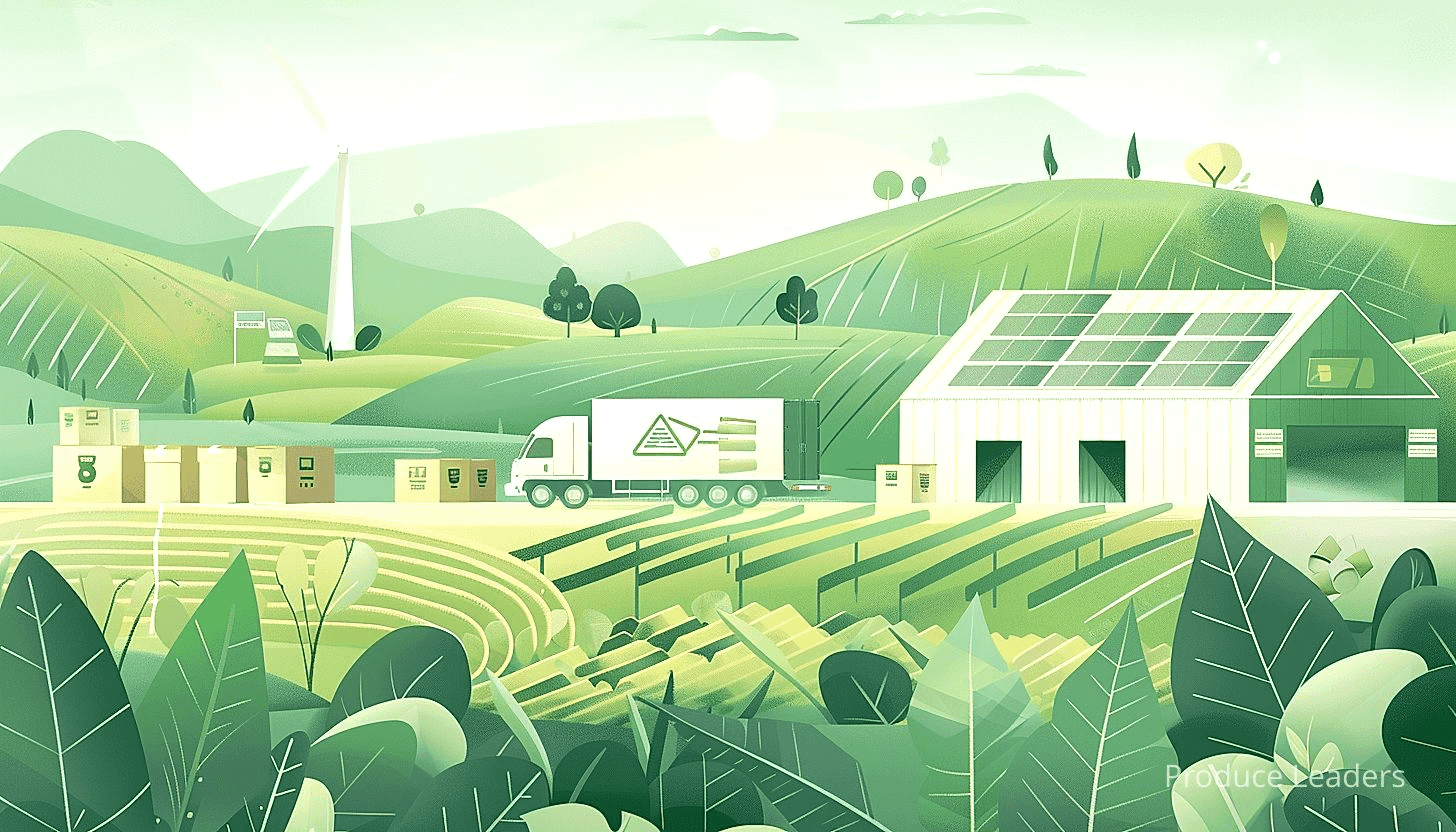
Moreover, well-planned delivery schedules ensure that the produce reaches the market at its peak freshness, reducing the possibilities of waste due to spoilage.
One of the critical elements in achieving this efficiency is employing advanced technology in logistics planning.
This is where innovative Logistics Management Systems (LMS) play a important role.
These software solutions help boost efficiency by providing intelligent routing options based on factors like distance, traffic patterns, vehicle capacities, and variations in fuel consumption.
Below are some significant benefits of implementing an efficient routing delivery system:
- Reduced Operational Costs: By taking the most efficient routes, fuel consumption and vehicle maintenance costs can be greatly reduced.
- Improved Customer Satisfaction: Timely and predictable deliveries significantly enhance the user experience, thereby improving customer satisfaction and loyalty.
- Decrease in Carbon Footprint: A shorter route and less time spent on the road directly reduces carbon emissions, contributing to environmental sustainability.
- Increased Profitability: The reduction in operational costs and increased customer satisfaction naturally results in higher profitability for the business.
Interestingly, efficient routing and scheduling do not only apply to long-distance transportation but also to the in-store logistics.
Within a store or warehouse, planning efficient pathways for moving produce across the floor can save notable amounts of energy and increase worker productivity.
Moreover, synchronizing the delivery schedules with the store operations, such as stocking and inventory management, can lead to additional efficiency improvements.
It is worth noting that while technology plays a significant role in this process, human expertise and judgment are equally important.
Experienced logistics managers can predict logistic challenges and make necessary adjustments to the plan, optimizing real-time routes and schedules.
Important: Implementing efficient routing and delivery schedules in logistics not only reduces fuel usage and logistical costs, but also ensures the produce reaches the market at its peak freshness, ultimately reducing waste and boosting customer satisfaction.
A commitment to efficient routing and delivery schedules is a far-reaching and comprehensive approach.
Indeed, This strategy not only reduces costs and boosts customer satisfaction, but also significantly contributes to the much broader goal of sustainability.
3. Reducing packaging waste through reusable materials
In Short: The emerging trend in produce logistics emphasizes reducing packaging waste by using reusable materials, which are cost-effective and environmentally friendly. By integrating natural resources such as recycled cardboard, returnable plastic crates, and reusable shopping bags, businesses can simultaneously cut waste disposal costs while minimizing their carbon footprint.
To fully grasp the concept of sustainability in produce logistics, it’s essenstial to understand the role that packaging plays. Packaging, particularly those made from non-degradable materials, contributes significantly to environmental pollution. A dominant practice in most logistics is the usage of single-use packaging materials which are disposed of after their primary use.
However, the emerging trend is towards reducing packaging waste through the utilization of reusable materials. This implies that the packaging materials are designed and managed to be used multiple times, either for the same or a different purpose. This approach is not just environmentally friendly but also cost-effective in the long run
Contrary to the conventional notion, reusable packaging does not compromise the quality or safety of the produce. Quite the opposite, it provides an opportunity for businesses to revise their packaging strategy, embracing a solution that delivers economic and environmental benefits. By integrating reusable materials in the packaging process, companies can significantly reduce their carbon footprint, waste disposal costs and natural resource consumption.
Moreover, the transition to reusable packaging materials is not a complicated process. It entails a careful analysis of the current packaging design and practices, followed by an exploration of potential reusable alternatives. This could range from using recyclable cardboard boxes for shipment to fabric nets for carrying produce.
Now, let’s dive into some of the common types of reusable packaging materials used in the produce industry:
- Recycled cardboard: These are made from recovered paper and cardboard waste.
- Returnable plastic crates: They are designed for multiple uses and can be easily cleaned and disinfected.
- Pallet collars: These are hinged frame systems that transform pallets into boxes.
- Glass containers: These are often used for packing liquid produce and can be returned and refilled.
- Reusable shopping bags: These bags are made from cloth or other durable materials, and customers bring their own when shopping.
Furthermore, it’s important to note that the implementation of reusable packages requires the active participation of the various stakeholders in the supply chain, including packaging manufacturers, food producers, and customers. The manufacturers need to design and produce packaging that can withstand multiple uses, while the food producers need to find suitable systems for collecting and reintegrating used packages into their operations.
Pro Tip: To enhance your company’s sustainability efforts and reduce carbon footprint, consider revising your packaging strategy to incorporate reusable materials, which are not only environmentally friendly but also cost-effective in the long run.
Most importantly, customers play a crucial role in this system. Incentives need to be in place to encourage customers to return their packaging. This can include deposit-refund schemes or even loyalty programs that reward customers for taking part in the company’s sustainability efforts.
Adopting reusable packaging materials has proved effective in curbing environmental degradation and preserving our planet’s resource. It is, therefore, a key step in actualizing sustainable produce logistics. Certainly, when correctly implemented and managed, reusable packaging materials can enhance green logistics, cost savings, and customer satisfaction.
4. Utilizing Organic Farming Methods for Cultivation
In Short: Organic farming, which uses natural resources instead of chemical fertilizers, not only improves the health of consumers and the planet but also supports biodiversity and maintains the ecological balance, benefiting natural pollinators. Through practices like composting, crop rotation, and natural pest management, it encourages a synergy with the environment, supports quality, health, and environmental responsibility, and is a vital component of sustainable practices in produce logistics.
You know that phrase “you are what you eat”? Well, it’s widely believed that our food absorbs elements from the environment it grows in, and for those of us eating that food, we essentially share in what that environment offers. On that note, we need to consider the methods of cultivation used in farming.
Organic farming focuses on the usage of natural resources, like compost and organic manure instead of chemical fertilizers, to nourish the soil and the crops. The need for this is now more important than ever with the concern for the health of consumers and the health our planet at the forefront.
In a time when the lure of fast production with the help of chemicals and genetically modified seeds tempts many farmers, organic farming serves as an alternative that keeps the integrity of the produce with a nod towards sustainability and long-term environmental health.
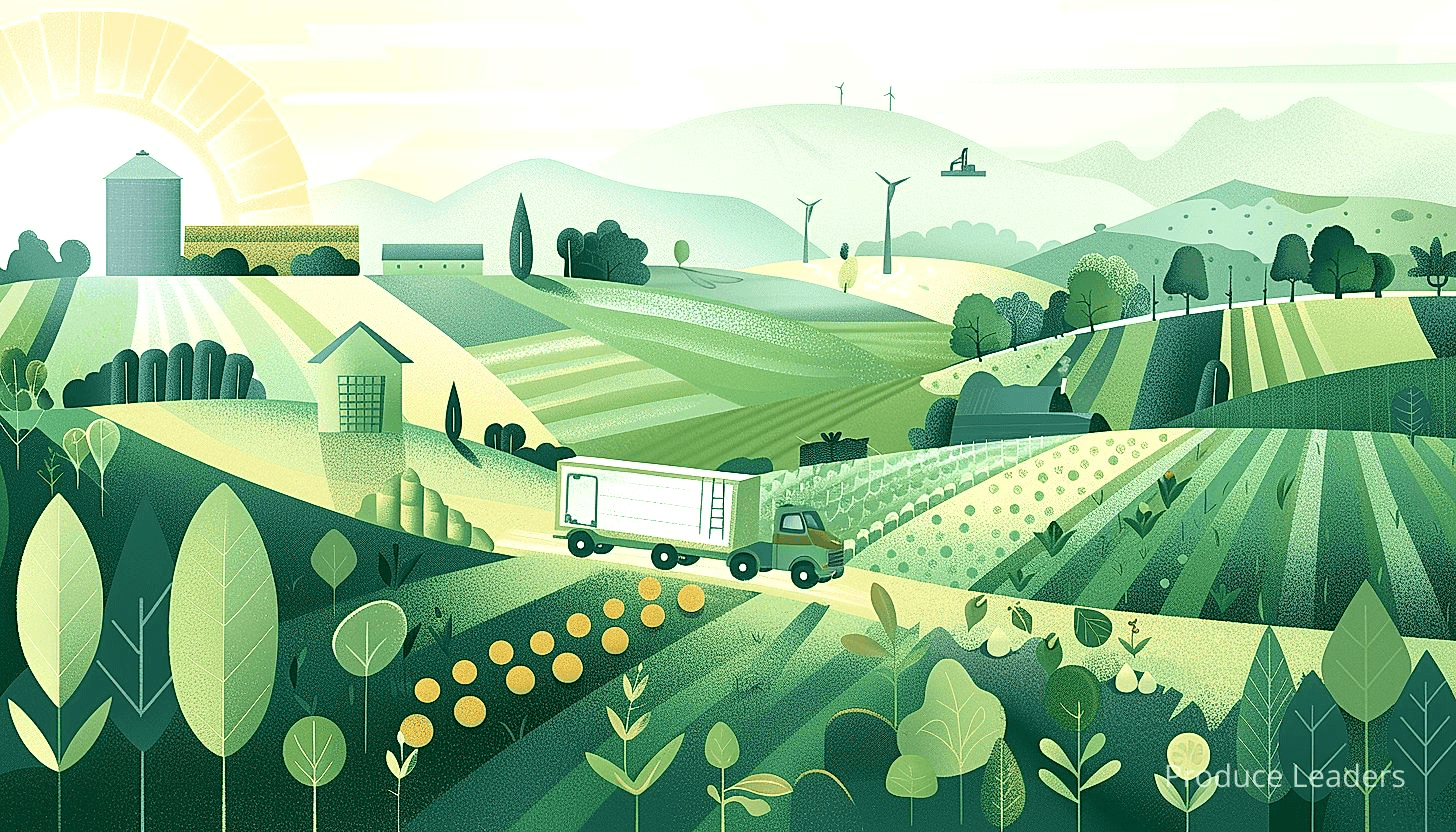
Opting for organic farming is primarily about investing in the ecosystem’s wellness. Since organic farming refrains from using synthetic pesticides, it underlines the value of biodiversity in maintaining the ecological balance. This proves beneficial to natural pollinators like bees and butterflies, who are integral to healthy, thriving ecosystems, which in turn support us.
The way that crops are grown can intensively affect those who live and work on the farm. Farmers who apply chemical fertilizers or pesticides can inadvertently harm themselves and others with toxins. With organic farming, this risk is drastically reduced.
These toxins also have a way of sticking around, contaminating water and soil for years to come. This points to the importance of integrating organic farming as a way forward for a cleaner, more livable planet.
Now, let’s look at some key practices that highlight the importance of organic farming:
- Composting: Using plant and animal waste to provide nutrients to the soil
- Crop rotation: Planting different crops in different seasons to maintain soil fertility
- Natural pest management: Using natural predators or plant-derived pesticides to control pests
- Maintain soil health: Regular soil testing to monitor nutrient levels and adjust practices accordingly
The approach towards agriculture needs an overhaul to make our food system sustainable. Organic farming stands as a tried-and-true method to restore the harmony between human activities and nature. It encourages a synergy with the environment rather than domination over it.
It’s important to remember, this isn’t just about the food we eat. It’s about the ecosystems those foods come from, the people who grow this food, the communities living around these farms and, ultimately, the health of our planet. The role of organic farming integrates all these aspects to create a sustainable future.
In incorporating organic farming in produce logistics, businesses will not only contribute to environmental sustainability but also enhance the integrity of their produce, which, in turn, could gain consumer trust and loyalty. There is a wide consumer base that aligns their purchasing choices with sustainable solutions in mind.
Taking this step towards sustainability helps to uphold the values of quality, health, and environmental responsibility, which are, increasingly, the hallmarks of successful businesses today. Organic farming is a key component of sustainable practices in produce logistics, and with attention and care, it can bear fruit in more ways than one.
5. Prioritizing locally sourced produce to reduce miles
In Short: Prioritizing locally sourced produce is key to sustainable practices in logistics because it significantly reduces carbon emissions and supports local economies. Despite challenges like seasonal variety and potentially higher prices, a sustainable system supporting local produce can lead to fresher food, fewer preservatives, strengthening community bonds, and overall healthier planet.
The continuous prominence of wanting to have a more sustainable and green environment has steered the logistics industry towards more eco-friendly practices, one of which includes prioritizing locally sourced produce. How could this be of importance? Let us excavate deeper into understanding the background of this practice.
Transportation forms a significant part of the logistic chain’s carbon footprint. According to findings by Carbon Brief, a comprehensive study on climate change, transportation accounted for approximately 23% of the world’s CO2 emission.
The longer the distance, the higher the greenhouse gas emissions, which includes CO2 resulting in the higher carbon footprint.
Considering this alarming fact, the most direct solution seems to be reducing the distance our food travels. This automatically highlights the need to source fresher, healthier, and sustainable produce locally. It’s a way to slash carbon emissions remarkably and promote local economies.
In addition to promoting sustainability, locally sourced produce is fresher since it’s not transported over vast stretches of miles and will generally have a higher nutritional value.
Buying locally grown produce also means supporting the local farmers and economy. This encourages farmers to continue cultivating in a way that preserves the land’s productivity, boosting the economy and the local culture.
Apart from this, I found out about several interesting advantages of sourcing produce locally. Here are some of them:
- Seasonal produce: Locally sourced fruits and vegetables are usually grown in their natural seasons, thus, enhanced taste and quality.
- Less preservatives: Produce that is meant for local consumption typically requires fewer preservatives since it does not need to withstand long-distance transport.
- Strengthening community bond: Buying from local farmers allows you a rare opportunity to learn how your food is grown and even a chance to visit farms.
While there are plenty of benefits to sourcing locally, as always, it does not come without its own share of challenges. There can be a lack of variety in seasonal produce or constraints in producing some produce due to geographical or climatic restrictions. Potentially higher prices may also be a barrier due to lack of scale seen in commercial farming.
Let’s shift our attention back to the focus of our discussion – sustainable practices in produce logistics. Despite its challenges, the word “sustainability” goes beyond environmental impact. It extends to promoting economic health and social equity. In this light, sourcing locally, with all its implications, is a step we ought to consider seriously.
To make any meaningful impact, businesses and consumers need to come together and make consuming locally produced food a priority. From logistics to restaurants to us consumers, the collective choice for local sourcing allows us to contribute to a healthier planet and community, consciously and responsibly.
I believe it is not merely a matter of switching from non-local to local, but building a system that supports the sustainability of produce logistics in its entirety.
6. Optimizing Warehousing Procedures for Energy Efficiency
In Short: Enhancing energy efficiency in warehouse operations is key in achieving sustainability, reducing costs and minimizing the carbon footprint. Businesses can achieve this through investing in energy-efficient equipment, implementing eco-efficient material handling, optimizing space utilization, incorporating automated systems, and harnessing energy management systems.
The concept of sustainable logistics heavily revolves around the thought of efficiently utilizing the available resources, especially energy. Accordingly, optimizing warehousing procedures for energy efficiency is a topic of paramount importance.
While a majority of businesses focus on the operations happening outside the warehouses, such as transport and delivery, the processes happening inside the storage facilities also tie deeply into the sustainability goals.
Warehouses are energy-intensive spaces which make their optimization a crucial step towards a sustainable supply chain.
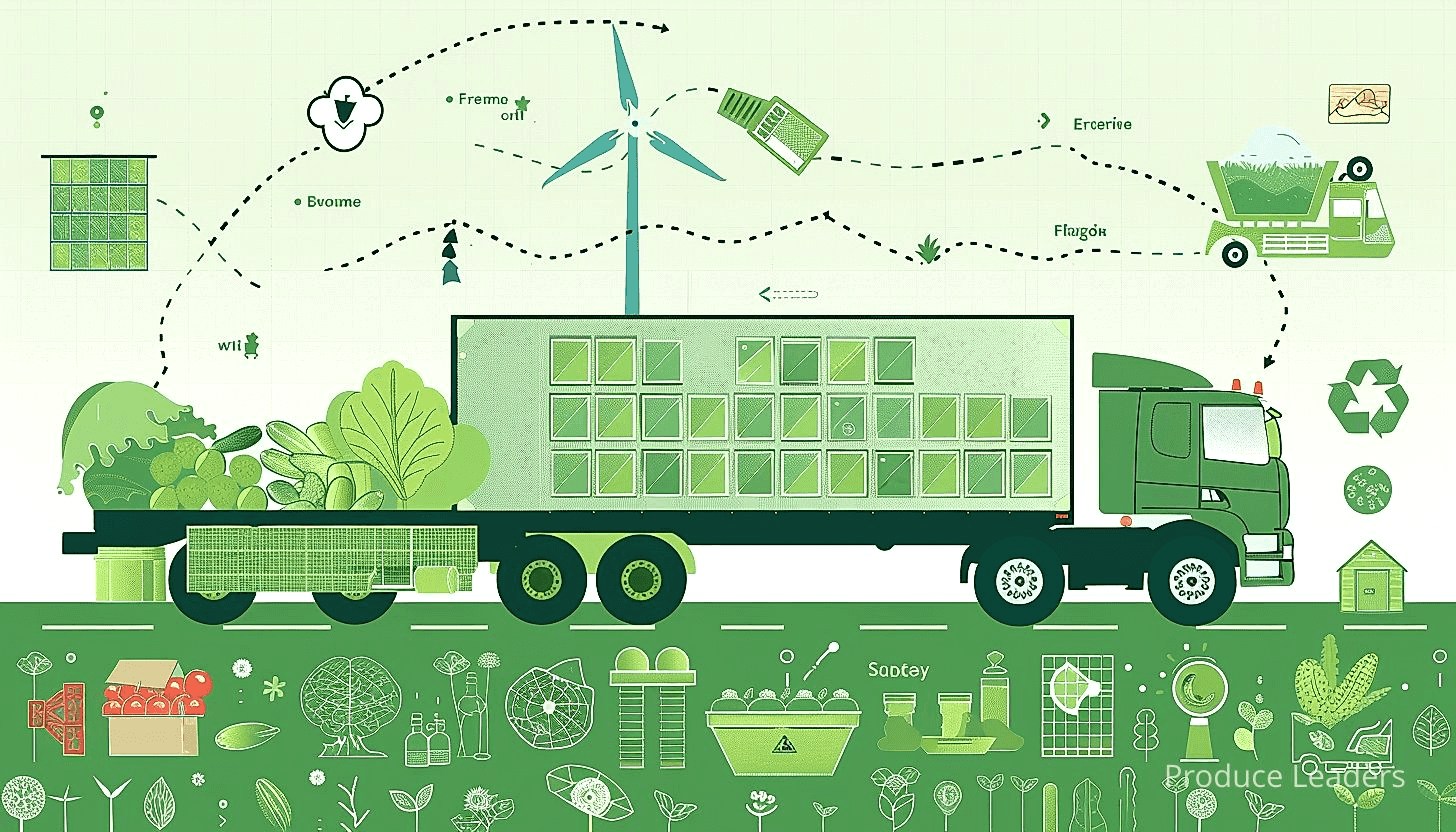
On this note, I want to draw your attention to certain strategies that can assist businesses in creating a more energy-efficient warehouse environment. Here they are:
- Invest in Energy-Efficient Equipment: This should be first on the list for businesses moving towards sustainability. Equipment such as LED bulbs can reduce energy usage and thus, the carbon footprint.
- Transition to Sustainable Material Handling: Eco-efficient equipment is not only beneficial for cutting down electrical energy but also in efficiently handling materials within the warehouse.
- Optimal Utilization of Space: Designing and implementing intelligent racking systems would use the warehouse space optimally and reduce the energy spent on material handling and movement.
The implementation of these changes may carry an upfront cost. However, long-term benefits, including reduced energy expenses and improved corporate reputation, largely outweigh the initial investment.
Another integral part of optimizing warehousing procedures includes the incorporation of automated systems. These systems make the operations more accurate, efficient, and help in the reduction of energy waste.
The automation of the supply chain means less downtime, and hence, less energy waste. Optimized workflow with fewer interruptions leads to balanced energy consumption over time.
Additionally, energy management systems can also aid businesses in achieving sustainable warehousing goals. These systems, when coupled with the Internet of Things (IoT) technology, can provide real-time information on the energy consumption of different warehouse areas and help streamline the use of energy.
A sustainable approach in logistics is not just about adopting green technologies but also about improving operational efficiency in every possible way, which includes the smart use of warehouse resources.
Important: I want to highlight that optimizing warehousing procedures for energy efficiency is paramount for sustainable logistics, and implementing changes like investing in energy-efficient equipment, transitioning to sustainable material handling, and optimal space utilization can lead to significant reduction in energy consumption and align the business with global sustainability goals.
A strategic approach towards the optimization of warehousing procedures could translate into a significant reduction in energy consumption. This, in turn, will also help in curtailing the greenhouse emissions thus aligning the business with the global sustainability goals.
Tomorrow’s warehouses are bound to be smarter, more energy-efficient spaces. Businesses embracing sustainable warehousing initiatives today are likely to be the leaders of tomorrow.
7. Using software to reduce inefficiencies and waste
In Short: Advanced software solutions in produce logistics streamline operations, reduce waste, and promote sustainability by managing supply and demand in real-time, optimizing routing, managing inventory, and forecasting demand. These technologies also provide insights into consumer behavior, measure environmental impact, assist in implementing recycling policies, and help maintain traceability in the supply chain.
As we dig in into the realm of sustainable practices in produce logistics, one cannot overlook the potential of technology, particularly software systems, to streamline operations and reduce waste.
Advanced software solutions can help monitor and manage the dynamics of supply and demand in real-time, allowing for more efficient planning and execution of logistics.
The ability to quickly adapt to changing market conditions is crucial in the fresh produce sector, where the shelf-life of products is often limited.
Using sophisticated software, businesses can optimize routing, scheduling, and inventory management, significantly reducing losses due to oversupply and unnecessary transportation.
Furthermore, these systems can provide valuable insights into consumer behavior, enabling businesses to better predict demand and thus minimize waste.
This leads us to the following list of key areas where software can make a significant impact.
- Inventory Management: Accurate tracking of inventory can aid in ensuring the right amount of produce is available at the right time, reducing wastage due to spoilage or overstocking.
- Efficient Routing: Using advanced algorithms, software can help determine the most efficient routes for transportation, saving fuel and time.
- Demand Forecasting: By analyzing consumer behavior and market trends, software can provide forecasts that help in planning, ultimately leading to less waste.
Another key aspect of employing software in logistics is the ability to track and measure environmental impact.
Software solutions can map out the carbon footprint associated with each logistical process, providing a clear picture of where improvements can be made in terms of sustainability.
Additionally, certain software can assist in implementing various recycling and composting policies within the supply chain, further accentuating their role in achieving sustainability goals.
Moreover, software plays a key role in ensuring traceability in the supply chain. This transparency can foster greater consumer trust, thus enhancing the marketability of sustainably grown and sourced produce.
Pro Tip: Utilize advanced software solutions in your produce logistics to optimize routing, scheduling, and inventory management, thereby reducing waste and gaining a competitive advantage in the market.
A strategic use of software solutions in produce logistics not only promotes sustainability but can also lead to a competitive advantage in the marketplace.
Overall, the technological innovations in this sector are rapidly unfolding, and staying updated with these can be key to implementing sustainable practices in produce logistics.
8. Encouraging Recycling and Composting in the Supply Chain
In Short: Encouraging recycling and composting in the produce logistics industry can significantly reduce environmental impact, foster sustainability, and inspire other sectors to adopt similar practices. Initiating these practices presents opportunities for a closed-loop system, thereby contributing to a healthier planet and a more sustainable industry.
Within the produce logistics industry, we have our unique challenges and opportunities when it comes to implementing sustainable practices.
To begin with, one particularly effective strategy is encouraging recycling and composting throughout the supply chain.
Spearheading eco-friendly recycling practices would not only cut down on environmental impact but also pioneer pathways for sustainable supply chain management.
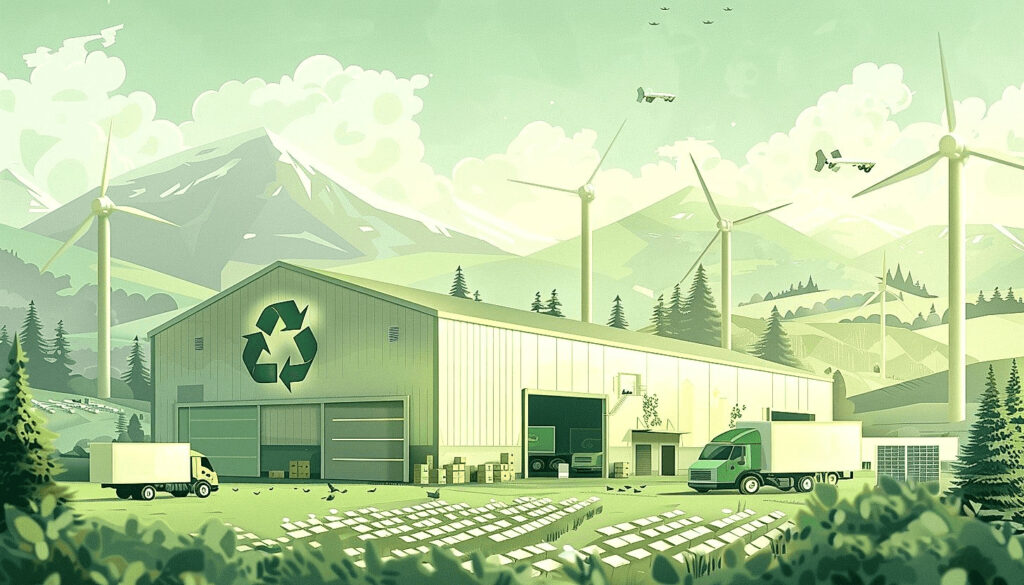
Moreover, it would create a positive ripple effect throughout the industry, potentially inspiring other sectors to adopt similar practices.
Before diving into some strategies to foster recycling and composting, it’s important to clearly understand the benefits of these practices.
- Reduction in landfill waste: By recycling and composting, the amount of waste that ends up in landfills significantly decreases.
- Creation of rich, fertile soil: Composting promotes soil health, allowing for the creation of nutrient-rich soil ideal for organic farming.
- Sustainability: These practices help in conserving natural resources, thereby fostering sustainability.
- Lowered greenhouse gas emissions: Composting organic waste significantly reduces methane—a potent greenhouse gas—production at landfills.
Beyond the obvious benefits to the environment, encouraging recycling in the supply chain has multifaceted advantages.
For instance, it offers the chance to create a closed-loop system, where waste is not merely discarded but instead utilized as a resource.
Moreover, materials like cardboard and plastic, frequently utilised in packaging, can be recycled and brought back into circulation, hence saving resources and reducing waste.
Similarly, composting organic waste – a major part of waste in the produce industry – forms an excellent opportunity to manage waste more sustainably.
Here, the notion of a ‘zero waste’ model enters the picture—a noble aspiration where all process outputs are utilized as inputs elsewhere in the system.
Consider, for instance, the organic waste from produce that usually goes to landfill.
Instead, through composting, this could be transformed into nutrient-rich matter to be used to nourish crops, achieving an efficient cycle of use-and-reuse, rather than consumption-and-disposal.
That said, introducing these practices may present initial challenges.
Important: Encouraging recycling and composting throughout the supply chain not only minimizes environmental impact but also creates a positive ripple effect throughout the industry, potentially inspiring other sectors to adopt similar sustainable practices.
However, the onus is on us as industry leaders to contiguously innovate and find solutions that drive us towards a more sustainable and circular economy.
By encouraging recycling and composting in supply chains, we can make significant strides towards this goal, while contributing to a healthier planet and a more sustainable industry.
9. Practicing Responsible Water Usage in Farming
In Short: Practicing responsible water usage in farming involves improving efficiency, understanding the varying water needs of crops, utilizing modern irrigation systems, and monitoring soil moisture levels. Along with reducing strain on water resources, these practices also result in long-term cost savings, increased crop yield, and decreased water pollution, highlighting the importance of farmers’ education on sustainable water practices.
Within the realm of sustainable practices in produce logistics, one can’t overlook the immense importance of practicing responsible water usage in farming.
Water is a important life source and a critical component for crop growth. However, it is a resource that is being depleted at a worrying rate, making its conservation a top-priority.
Responsible water usage in farming is not only about reducing the amount of water used but also about increasing its efficiency.
Having a deep understanding of the water needs of different crops and adjusting irrigation accordingly can contribute to significant savings.
Adopting modern irrigation systems, such as drip irrigation, that pinpoint the delivery of water directly to the roots of the plants, can remarkably increase water use efficiency.
This technique not only significantly reduces water waste but also ensures a targeted and optimal water supply to crops leading to healthful produce.
Measuring and monitoring soil moisture levels is another effective way of optimizing water usage. Sensing devices that notify farmers when the soil is dry can make a substantial difference.
This helps in avoiding over-irrigation, which wastes not only water but also the energy used in pumping and distributing it.
Now, let’s take a look at some specific strategies for responsible water usage in farming:
- Collecting and storing rainwater for irrigation.
- Practicing crop rotation to replenish soil moisture naturally.
- Planting cover crops to reduce evaporation from the soil surface.
- Using mulching practices to retain soil moisture.
Implementing these techniques for responsible water usage may perhaps seem challenging initially, but the long-term benefits to both the environment and the farmers are substantial.
Not only does it lead to a reduced strain on water resources, but it can also lead to long-term cost savings and increased crop yield.
Moreover, such practices reduce the impact of farming on local water bodies by limiting runoff and reducing soil erosion. Limiting runoff also decreases the amount of fertilizers and pesticides entering our waterways, reducing water pollution.
Beyond these measures, it’s equally crucial to raise awareness about responsible water usage among the farming community.
Pro Tip: To practice responsible water usage in farming, increase efficiency by understanding the water needs of different crops, adopting modern irrigation systems like drip irrigation, and monitor soil moisture levels to avoid over-irrigation.
Farmers ought to be provided with proper education about sustainable water practices, potentially through government led initiatives or collaborations with non-governmental organizations.
With the looming threat of water shortages worldwide, it’s imperative now more than ever to prioritize and incorporate responsible water usage in agriculture.
10. Advocating for fair trade and ethical practices
In Short: Sustainable produce logistics heavily relies on advocating for fair trade and ethical practices, encompassing living wages, safe working conditions, and the ethical treatment of all entities in the supply chain. This broad endeavor promotes long-term economic stability and an equitable food system while upholding transparent, respectful business operations, contributing to a sustainable and ethical future for produce logistics.
One key facet of sustainable practices in produce logistics is rigorously advocating for fair trade and ethical practices.
Rather than a mere supplemental initiative, supporting fair trade represents a crucial component of the sustainability matrix, striving to balance economic growth, social justice, and environmental protection.
This endeavor goes beyond the parameters of our immediate business and extends to the manner in which we treat all actors involved in the value chain.
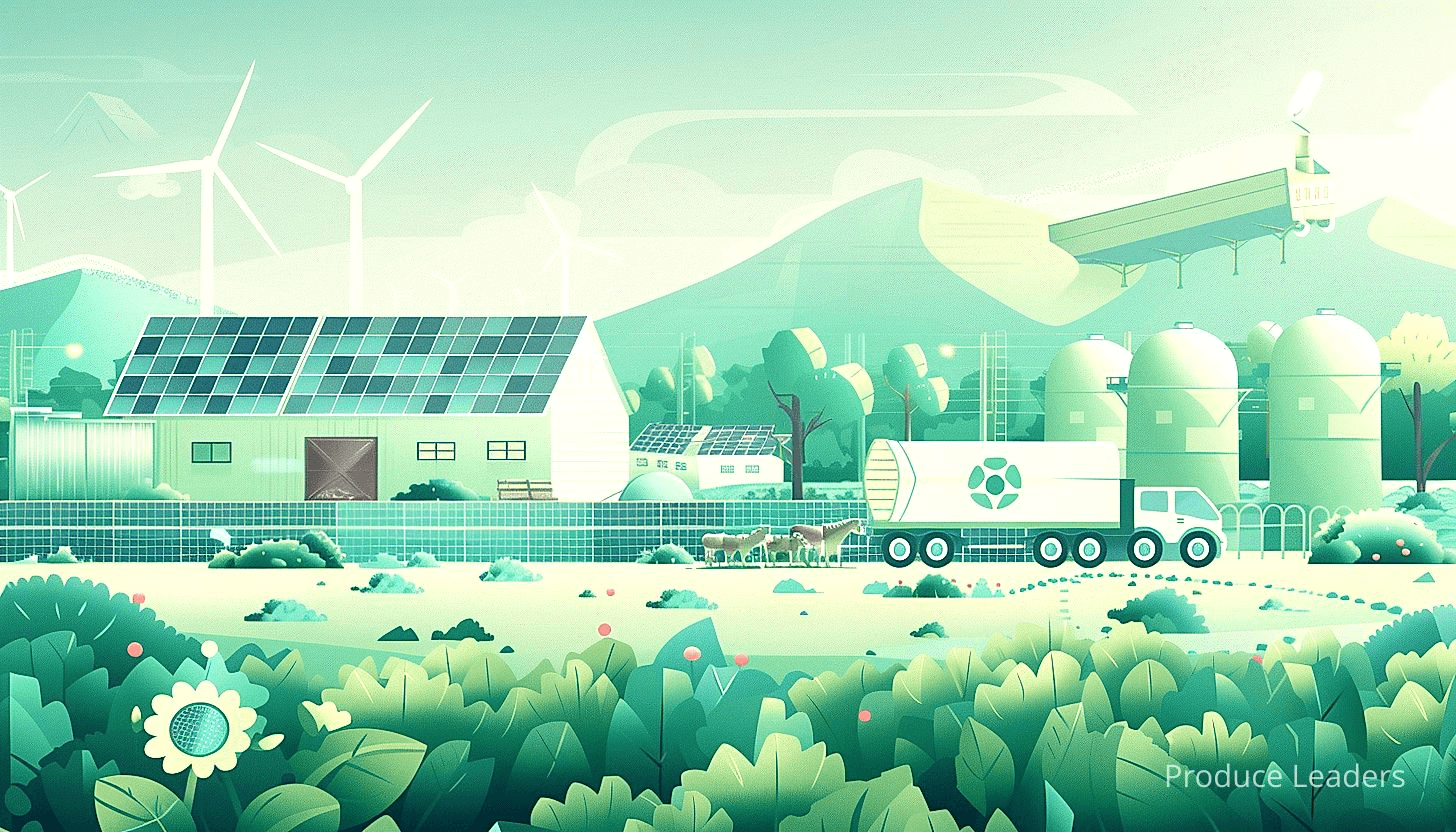
At the heart of fair trade principles is the assurance of living wages and safe working conditions for farmers, producers, and workers.
By fostering the right conditions and practices, we contribute to communities’ long-term economic stability and help prevent exploitative labor practices.
This aspect of fair trade, when amalgamated with environmentally sustainable farming techniques, can foster a more equitable and sustainable food system.
However, it’s important to understand that advocating for fair trade practices doesn’t stop at the producer level.
It transcends production units and is entwined with the ethical treatment of all entities in our supply chain—regardless of their role or station in our businesses’ architecture.
It’s fitting, therefore, to consider some fundamentals of ethical practices we strive to uphold in our operations. Here are several notable ones:
- Respecting the labor rights and human dignity of everyone involved in our business, from the farm to the table.
- Committing to ethical sourcing from suppliers that share our fair trade and sustainability core values.
- Committing to transparent dealings and foster stakeholder trust by providing honest and comprehensive information regarding our sustainability initiatives and operations.
- Pursuing continuous improvement in our sustainable practices, embracing innovation, and remaining open to corrections when necessary.
The intersectionality of these principled practices with our sustainable ideologies allows us to forge partnerships that are based on mutual respect and integrity—serving not just our collective profit margins, but also our society and planet.
This commitment is the backbone of our transition to ethically-run, sustainable businesses.
However, it must be stressed that advocating for such values is not only about communicating our efforts but also about via concrete actions.
It is a commitment to making the hard decisions that are often inconvenient or less profitable in the short term.
Important: Supporting fair trade represents a crucial component of sustainable practices in produce logistics, advocating for living wages, safe work conditions, economic stability, and ethical sourcing in an effort to foster an equitable and sustainable food system.
This dedication is also about being transparent with our customers and stakeholders about these efforts, holding ourselves accountable for our actions and their impacts.
Fair trade and other ethical practices are the route that gets us to our vision of a sustainable future for produce logistics.
The Bottom Line
Sustainable practices in produce logistics are not only viable but imperative for the longevity and health of our environment.
By implementing these practices, businesses have an opportunity to foster growth while concurrently curbing the harmful impacts associated with traditional logistics methods.
The upside is twofold – economic profitability and environmental stewardship – making the transition to sustainable practices a win-win situation for all.
It is safe to say that the future of produce logistics lies in sustainable practices, rightfully blending profitability with planet protection.




